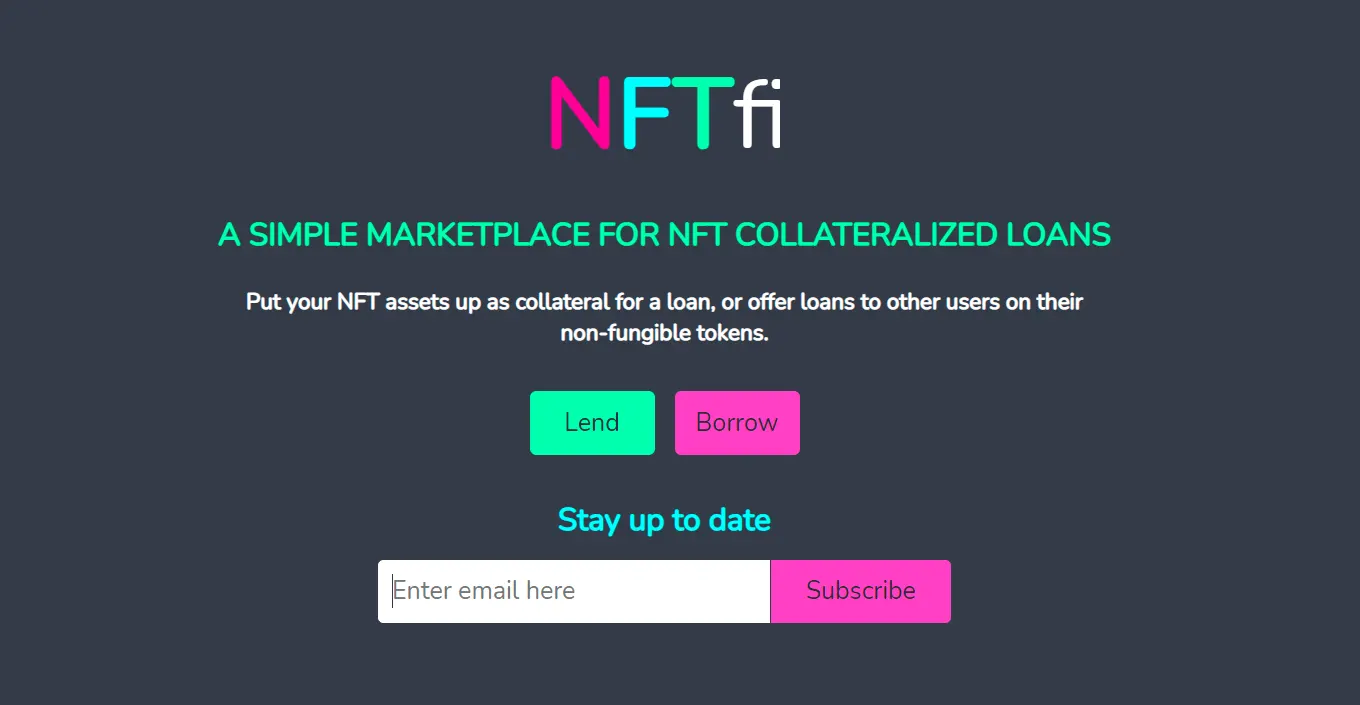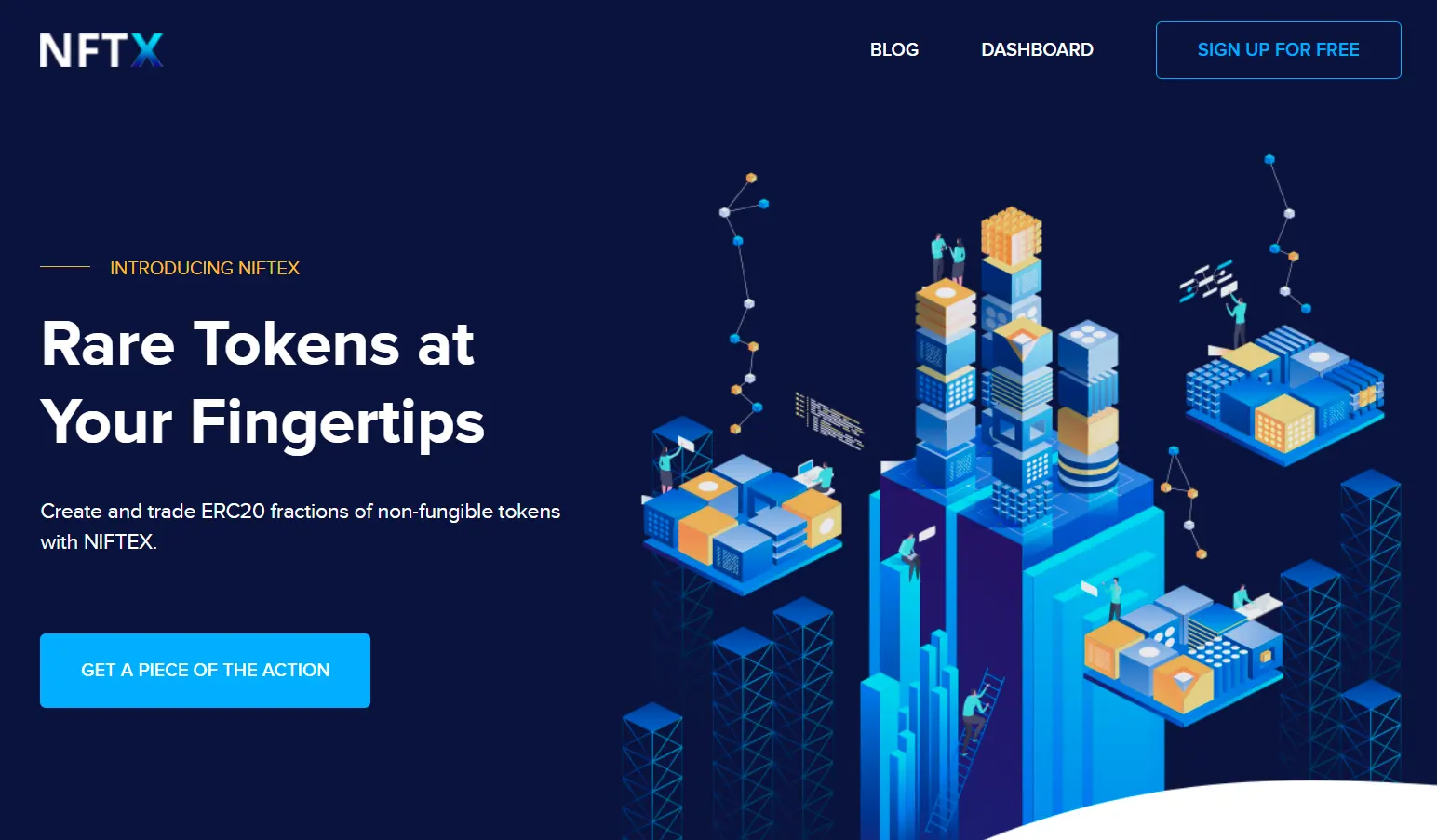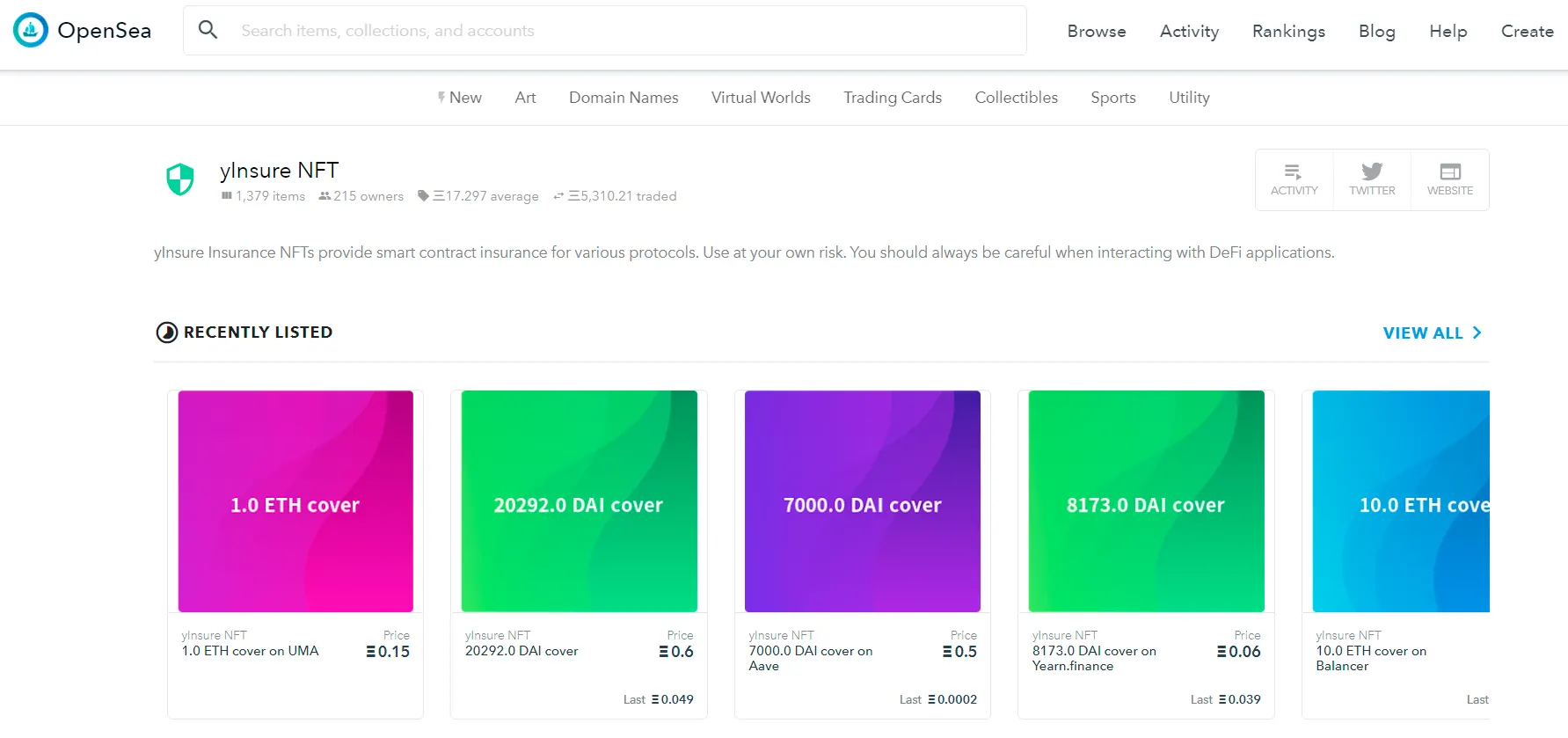On a smart contract platform like Ethereum, you can tokenize really anything you can imagine. This includes media like pictures, music, virtual gaming land, and beyond.
When we tokenize this media on Ethereum, the result is what we call a non-fungible token, or NFT. These digital assets are tradable and provable representations of their underlying media, whatever it may be.
Zooming in, the most popular standard for NFTs today is the ERC-721 standard. As opposed to fungible ERC-20 tokens which are indistinguishable and interchangeable with each other, ERC-721 tokens are explicitly scarce and unique and thus not directly interchangeable with anything else. In this sense, you can think about ERC-20s as digital currency (i.e. effectively interchangeable from bill to bill) while ERC-721s are akin to digital “one-of-a-kind” collectibles like trading cards (e.g. a rare 1/1 Mickey Mantle baseball card that has no copy in the world).
That said, this ERC-721 model has paved the way to “media legos” that are programmable and composable, which is already leading to all sorts of revolutionary new cultural possibilities. Artists who mint NFTs can automatically cake royalties into these assets’ smart contracts, ensuring the creators receive a cut of secondary sales forevermore, for example.
Moreover, the NFT ecosystem is booming right now as more people are stumbling upon and diving deeper into its many novel possibilities. But NFT tech in general is something of a blank canvas, it powers an endless array of different digital use cases.
This vast promise has led to rapid growth around NFTs in recent times. For example, according to NFT market data tracker website NonFungible.com, the NFT arena has now facilitated nearly $180M in total volume to date. The reason why that’s so impressive is this figure just passed $100M in the summer of 2020. Not even one year later, then, the volume around NFTs has gone parabolic and almost doubled.

In today’s post, then, we’ll be diving into the NFT ecosystem’s most dominant sectors and projects to date in order to give you a better idea of the blossoming activity in this really promising decentralized frontier.
Art
“Cryptoart,” as NFT art is often called, is one of the fastest growing NFT niches. Painters, designers, musicians, and more create NFTs through blockchain-based minting platforms in order to enjoy more control over their own sales.
SuperRare
Facilitating nearly $10M in volume to date, SuperRare is one of Ethereum’s premiere cryptoart dapps for 1/1 edition NFT releases. SR’s “Early Access” roster of artists is still handpicked by the project’s team, so minting is only open to artist applicants who’ve been accepted onto the platform. The project’s roster has been and continues to be exceptional, though, a testament to the SR team’s curational skills and its artists’ amazing works.

Async Art
Async Art is an art platform on Ethereum centered around programmable art. The idea? Async pieces have Master and Layer tokens. The Master token represents the total and perpetually changing artwork, while Layer tokens can be collected and then triggered by their collectors to create new appearances in the Master image. Living, breathing artworks, all powered by Ethereum!

Nifty Gateway
Owned by the Gemini crypto exchange, Nifty Gateway has recently surged into becoming one of the NFT ecosystem’s most popular marketplace’s. That’s because the project focuses on friendly UX and viral-friendly drops around acclaimed artists like Beeple, Pak, Trevor Jones, and more.

Rarible
Rarible is a do-it-yourself NFT marketplace. This means you can go to the platform and permissionlessly mint your own NFTs whenever and however you please. This has led to creators flocking to Rarible, where the minting process is easy, free, and not gated. On the flip side, Rarible has also become a hotbed for fake items at times, i.e. people who mint counterfeit versions of NFTs and try to sell them as originals. To an extent, this is an unavoidable reality of DIY minting platforms though.

Art Blocks
Art Blocks is an on-demand generative art platform built on Ethereum. Generative artists can upload custom-tailored algorithms to the marketplace for limited-edition drops. Then when users make a purchase while a drop is live, an algorithm is pinged and a unique NFT artwork is generated from the artist’s specially created code.

Collectibles
Physical collectibles will increasingly become a thing of the past as Ethereum offers an easy and viable way to make high-quality digital collectibles, including natively digital assets or digital assets that are also tied to real-world collectibles.
CryptoPunks
Launched in the summer of 2017, CryptoPunks is the OG NFT project. It was the first NFT project released through Ethereum and paved the way to the ERC-721 token standard that’s come to dominate the NFT ecosystem to date. There are only 10,000 punks, they’re rare and exquisite collectibles, and they’ve taken on a second life through DeFi projects like the NFT index fund protocol NFTX, which has released a $PUNK fund underpinned by choice CryptoPunks.

CryptoKitties
Created not long after the CryptoPunks craze, CryptoKitties is Ethereum’s other OG NFT project. In Dec. 2017, the popularity surge around CryptoKitties led to one of Ethereum’s first major congestion events. These collectable and breedable NFTs saw something of a resurgence in 2020 as a new influx of collectors entered the NFT ecosystem.

Avastars
Avastars is a pioneering, fully on-chain NFT project created by NFT development studio nft42. Akin to CryptoPunks 2.0, Avastars have their media and metadata entirely stored on the Ethereum blockchain. This means these collectibles are entirely secured and retrievable from Ethereum, so there’s no need to trust any 3rd parties when it comes to enjoying and collecting these digital assets.

Aavegotchi
Aavegotchi is a digital collectibles project created by popular DeFi app Aave. These ghost-centric digital creatures are like Tamagotchi monsters, but on DeFi x NFT steroids. You can collect them, build them up, battle them, and hold them to earn yield as they can store interest-bearing DeFi tokens!

Hashmasks
Hashmasks is the newest digital collectibles project on the NFT scene, but it’s made major waves in short order. As proof, the project has facilitated more than 10k ETH worth of volume roughly one week after launching! And the interest has been so high that the NFT index fund project NFTX expedited the release of a $MASK index fund product.

Games
Blockchain games as powered by Ethereum are trailblazing toward a “play-to-earn” future. Players play, earn more assets, and can trade them along the way. Where applicable, players can also “own” the games they play by using governance tokens to decide the fate of the franchises they’re passionate about.
Axie Infinity
Axie Infinity is a Pokemon-like Ethereum game where users can collect, breed, and battle iconic Axie monsters for glory and profit via NFT gaming assets that can be traded and sold. Axie Infinity is not only the largest Ethereum game right now, it’s also one of Ethereum’s most used apps period at the moment. That feat is a testament to Axie Infinity’s excellent design.

Sorare
Sorare is a rising fantasy futbol game that’s made major inroads by partnering with some of the biggest professional futbol franchises in the world. Players create fantasy squads with digital trading cards and then go head-to-head in competition to see who’s the best futbol manager around.

Gods Unchained
Gods Unchained is the Ethereum ecosystem’s answer to the trading card game Magic: The Gathering. With GU, players create decks of different fantastical varieties and then battle them to win on-chain renown and tokenized prizes.

Metaverse
Virtual reality has been possible for years now. But Ethereum is the first tech that really allows VR projects to make their underlying digital real estate scarce and easily tradable around the globe via NFTs. For this reason, these VR projects are starting to lead to an open metaverse, a new sort of internet that’s not defined by static pages but rather by virtual realms.
Decentraland
Decentraland is one of Ethereum’s oldest and most used VR projects. Its virtual land parcels are tradable for the project’s native currency MANA. In recent years, we’ve seen Decentraland become a popular destination for VR events and games.

Cryptovoxels
Cryptovoxels is another one of Ethereum’s premier VR projects that’s made a name for itself through the excellent and mindful stewardship of its development team. With Cryptovoxels, users can buy parcels as NFTs and then build all sorts of novel digital installations atop them, like NFT art galleries.

Utility
In the early days, NFTs have typically been associated with traditional media types, like art, music, gaming assets, and so forth. But NFTs can be used to represent almost anything, including utilities like domain names. Expect to see such use cases swell in the years ahead.
Ethereum Name Service
The Ethereum Name Service (ENS) lets Ethereum users create and manage decentralized domain names atop Ethereum. These decentralized domains are minted as NFTs, which makes them that much easier to trade and facilitate. These NFTs, e.g. ethereum.eth, make it considerably simpler to conduct transactions through as opposed to long alphanumeric addresses.

DeFi + NFTs
Two of the brightest stars in the young Ethereum ecosystem are NFTs and DeFi, or decentralized finance. Over the past year, we’ve seen the crossroads of NFTs and DeFi – which have hitherto been somewhat siloed from each other – see increased melds and innovations. Now, NFT + DeFi protocols are some of the hottest projects around.
NFTX
NFTX is an NFT index fund protocol. The idea? To bring liquidity to illiquid NFTs like CryptoPunks by creating tokenized index funds like $PUNK. The project’s governance token, NFTX, is used by the project’s community to manage the protocol in decentralized fashion.

NFTfi
NFTfi is a marketplace for NFT-collateralized DeFi loans. Users can lend out choice NFTs or borrow them. In the case of borrower defaults, the ownership of the underlying NFTs are transferred to lenders.

NIFTEX
NIFTEX is a protocol for fractionalizing NFTs into easily tradable ERC-20 tokens. In this way, NIFTEX opens up the possibility of collective ownership of highly-sought NFTs. Collectors can attempt to buyout all the ERC-20 shards of an NFT in order to take complete ownership of it.

Yearn Insurance NFTs
Yield aggregator protocol Yearn is one of the most respected projects in DeFi, so its yInsure insurance NFTs have been something of a hit with both the DeFi and NFT sectors. These tokenized insurance policies can be readily traded on NFT marketplaces like OpenSea and Rarible.

Conclusion
The young NFT ecosystem is revolutionary and varied. And “media legos,” like DeFi’s “money legos,” have tons of possible and unprecedented use cases, so expect the ecosystem to become even more revolutionary and varied over time.
The aforementioned projects are some of the earliest stalwarts on the NFT scene, but they’re already that: stalwarts. They’ve made significant contributions to the space respectively and have earned early traction accordingly, so they’re all worth researching in their own rights.
Yet there will be many more NFT projects to come, because that’s the nature of NFTs: they’re a blank canvas tech that can be used for an endless array of use cases, and the world’s just starting to realize that. Thus as Ethereum and the cryptoeconomy continue to rise, look for NFTs to only continue gaining notable adoption across many walks of life.
